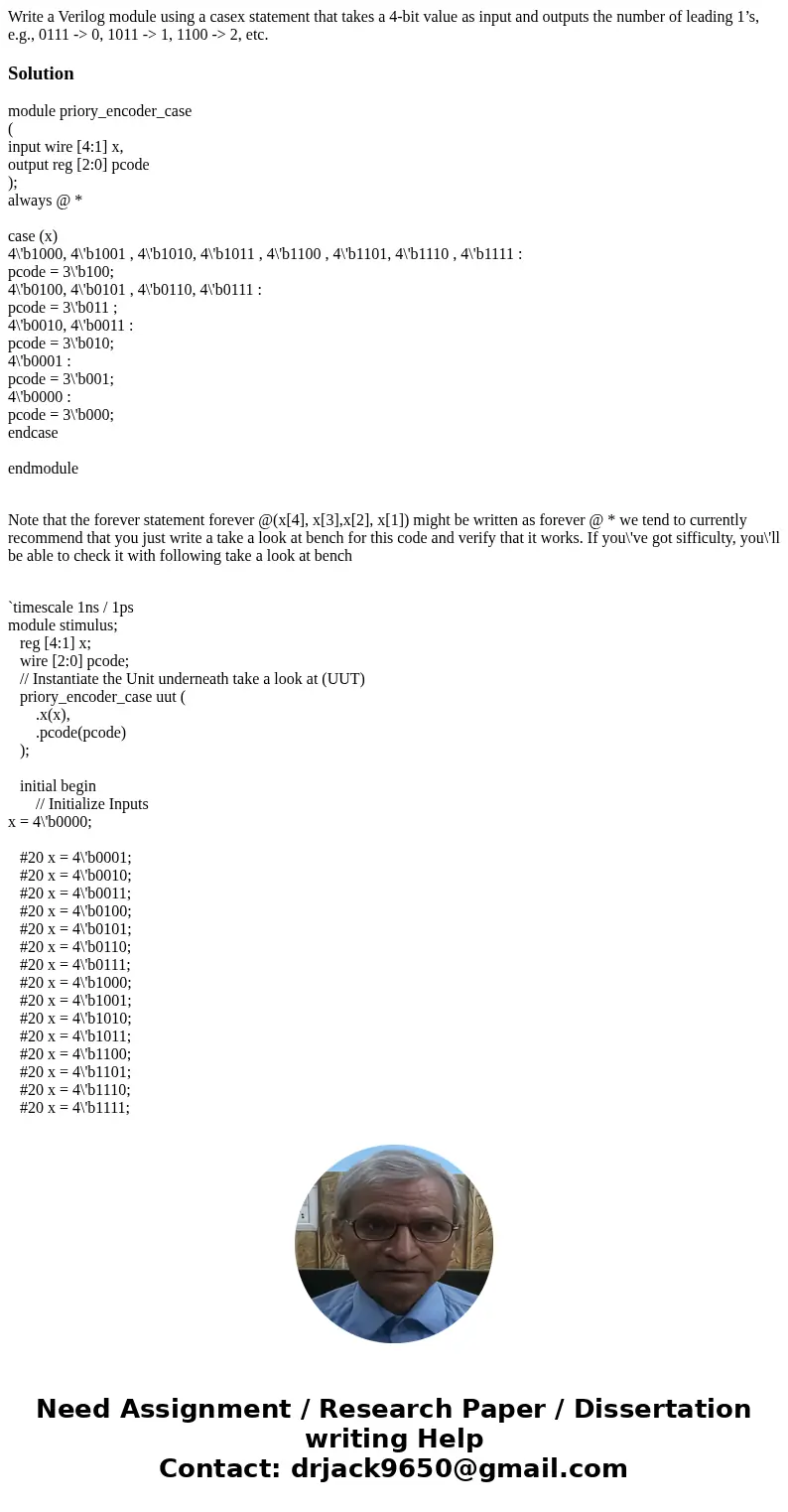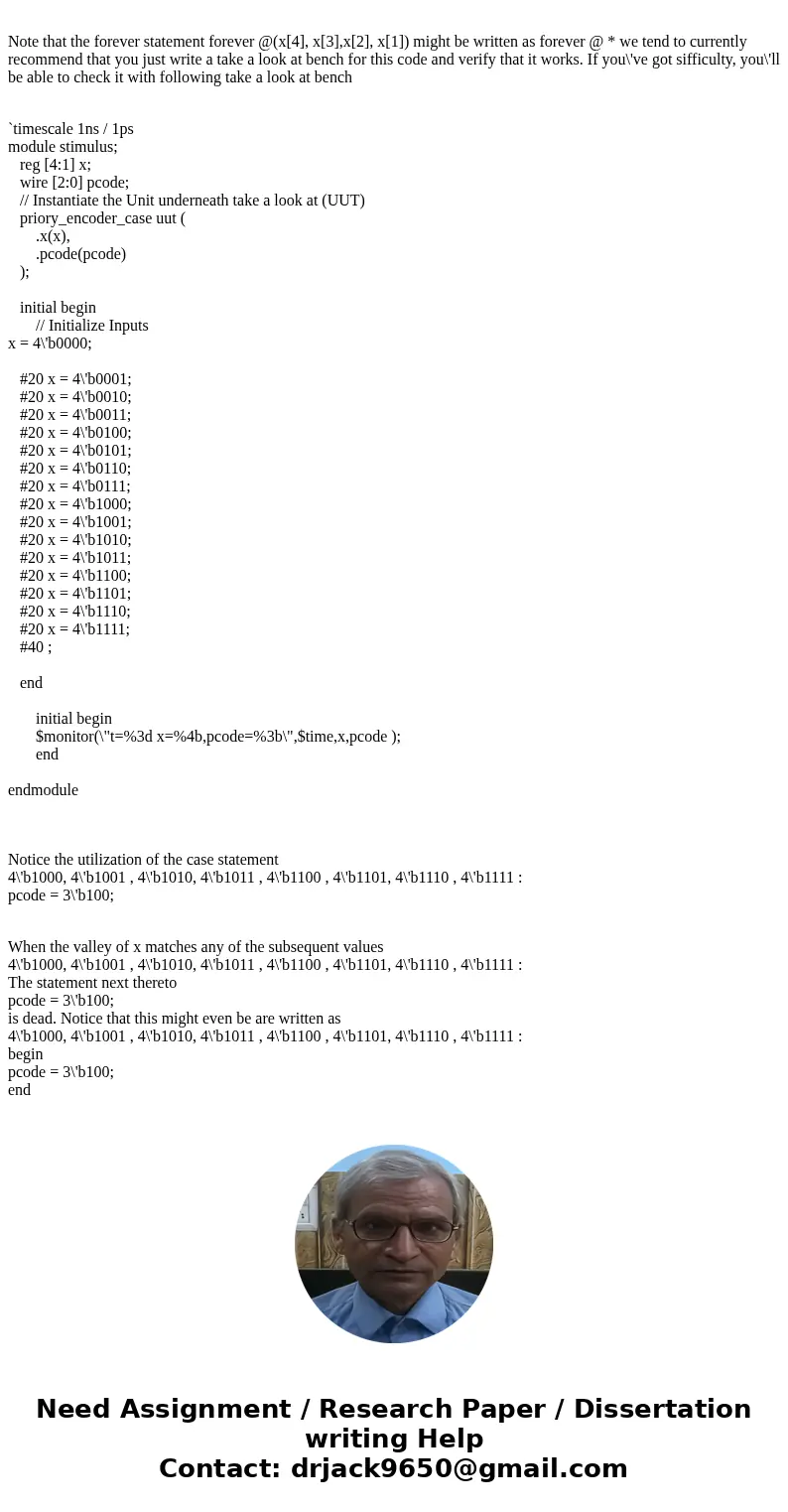Write a Verilog module using a casex statement that takes a
Write a Verilog module using a casex statement that takes a 4-bit value as input and outputs the number of leading 1’s, e.g., 0111 -> 0, 1011 -> 1, 1100 -> 2, etc.
Solution
module priory_encoder_case
(
input wire [4:1] x,
output reg [2:0] pcode
);
always @ *
case (x)
4\'b1000, 4\'b1001 , 4\'b1010, 4\'b1011 , 4\'b1100 , 4\'b1101, 4\'b1110 , 4\'b1111 :
pcode = 3\'b100;
4\'b0100, 4\'b0101 , 4\'b0110, 4\'b0111 :
pcode = 3\'b011 ;
4\'b0010, 4\'b0011 :
pcode = 3\'b010;
4\'b0001 :
pcode = 3\'b001;
4\'b0000 :
pcode = 3\'b000;
endcase
endmodule
Note that the forever statement forever @(x[4], x[3],x[2], x[1]) might be written as forever @ * we tend to currently recommend that you just write a take a look at bench for this code and verify that it works. If you\'ve got sifficulty, you\'ll be able to check it with following take a look at bench
`timescale 1ns / 1ps
module stimulus;
reg [4:1] x;
wire [2:0] pcode;
// Instantiate the Unit underneath take a look at (UUT)
priory_encoder_case uut (
.x(x),
.pcode(pcode)
);
initial begin
// Initialize Inputs
x = 4\'b0000;
#20 x = 4\'b0001;
#20 x = 4\'b0010;
#20 x = 4\'b0011;
#20 x = 4\'b0100;
#20 x = 4\'b0101;
#20 x = 4\'b0110;
#20 x = 4\'b0111;
#20 x = 4\'b1000;
#20 x = 4\'b1001;
#20 x = 4\'b1010;
#20 x = 4\'b1011;
#20 x = 4\'b1100;
#20 x = 4\'b1101;
#20 x = 4\'b1110;
#20 x = 4\'b1111;
#40 ;
end
initial begin
$monitor(\"t=%3d x=%4b,pcode=%3b\",$time,x,pcode );
end
endmodule
Notice the utilization of the case statement
4\'b1000, 4\'b1001 , 4\'b1010, 4\'b1011 , 4\'b1100 , 4\'b1101, 4\'b1110 , 4\'b1111 :
pcode = 3\'b100;
When the valley of x matches any of the subsequent values
4\'b1000, 4\'b1001 , 4\'b1010, 4\'b1011 , 4\'b1100 , 4\'b1101, 4\'b1110 , 4\'b1111 :
The statement next thereto
pcode = 3\'b100;
is dead. Notice that this might even be are written as
4\'b1000, 4\'b1001 , 4\'b1010, 4\'b1011 , 4\'b1100 , 4\'b1101, 4\'b1110 , 4\'b1111 :
begin
pcode = 3\'b100;
end


 Homework Sourse
Homework Sourse